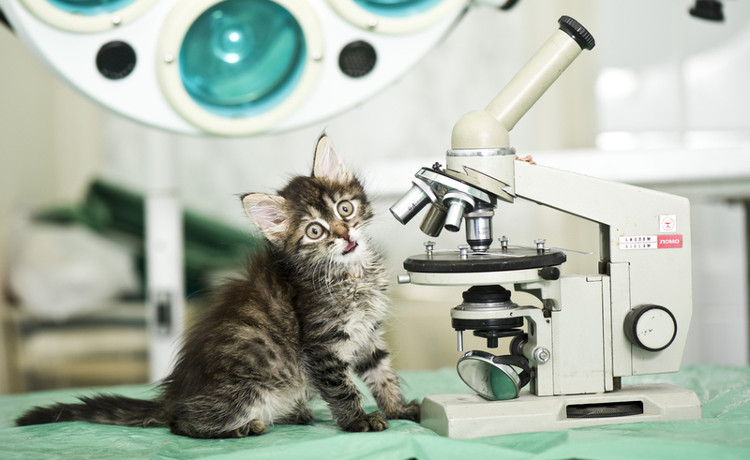Strange story of cat co-authoring the study of physics
The story like this joke actually happened in reality in America. In 1975, a cat named Willard became co-author in a specialized paper entitled "Two, three and four atoms in helium gas experiments".
Published in Physical Review Letters, this paper describes the experimental results of studying the movement of helium-3 isotopes at different temperatures. The experiment was done by Jack H. Hetherington, a professor of physics at Michigan State University, this experiment brought important knowledge still worth reference today. However, when Hetherington tried to publish this work, there were some problems.
"I sent the report and felt very proud. I believe it will soon be published soon," Hetherington said in his memoir . "But after that, I still did not receive a reply from the editor. Seeing this strange thing, I immediately gave the report to a friend who came over with the hope of finding the problem. My friend when That told me, this study is very good, but it will not be published. "
 A cat named Willard has suddenly become a physics expert at the University of Michigan, USA.(Image source: shutterstock.com).
A cat named Willard has suddenly become a physics expert at the University of Michigan, USA.(Image source: shutterstock.com).
The reason is because Hetherington accidentally used the name "we" in his article , not the "me" name. The journals have a general rule, which is to prohibit the use of the "we" name unless the research has many authors involved. "Changing the name of the entire study is too difficult at the time. Because they are handwritten and written on paper with a typewriter, the change is almost impossible," Hetherington said.
"After thinking all night, I called the editorial clerk to change the title of the study. I asked them to add another author named Chester, a Siamese cat that my family adopted."
Chester got Hetherington's pseudonym Willard and in the pseudo introduction, he stated: "Willard is one of the few purebred Siamese cats living in Aspen, Colorado." And then, the report was approved for publication. Willard cat becomes an expert in the University of Michigan physics and has a research paper published in a prestigious scientific journal.

Willard's scientific paper as a signature (right corner).(Image source: Google books).
You may think this is crazy. But the reason is because Hetherington does not want to share his research with someone who has absolutely no contribution at all. Therefore, he would rather allow a cat to co-author the name.
Of course, Physical Review Letters cannot be disclosed to the truth about "Willard scientist" and this story only broke when Hetherington published his memoir.
People will think this story is quite funny. However, this is evidence that inadequacies and rigid principles can exist anywhere, including in the field of science.
- Higgs - The last piece of nuclear physics exists?
- 2016 Nobel Prize in Physics and the mystery of strange materials
- The 36th National Conference on Theoretical Physics
- The king of physics is lazy to study when he was a child
- Strange story: The stone has eyes, crying like a human
- 9-year-old boy has strange symptoms, up to 300 teeth
- Every time you take a picture there will be a strange phenomenon happening to your brain that no one knows why
- Ghost physics: Signal faster than light
- Strange 12-year-old boy a week ... laid out 7 eggs?
- The story of the hybrid animal
- Lasers cool or create strange states
- The world's greatest
 The most famous scientific failures in history
The most famous scientific failures in history Mysterious genius mechanic and the machine froze time
Mysterious genius mechanic and the machine froze time The son carries the 'bad gene' of genius Albert Einstein
The son carries the 'bad gene' of genius Albert Einstein Isaac Newton
Isaac Newton